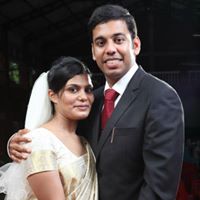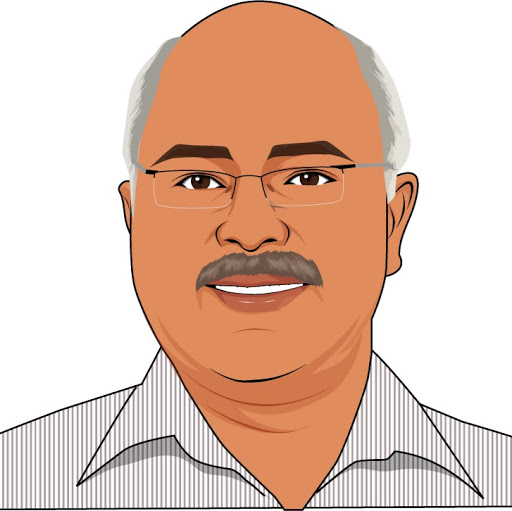Paul J Mathews
age ~53
from Clinton, WA
Paul Mathews Phones & Addresses
- Clinton, WA
- 11030 Evergreen Way, Everett, WA 98204 • (425)7891066
- Kirkland, WA
- Missoula, MT
- Edmonds, WA
- Seattle, WA
Medicine Doctors

Paul T. Mathews
view sourceSpecialties:
Anesthesiology
Work:
Tacoma Anesthesia Associates
315 Martin Luther King Jr Way, Tacoma, WA 98405
(253)2741642 (phone), (253)2741685 (fax)
315 Martin Luther King Jr Way, Tacoma, WA 98405
(253)2741642 (phone), (253)2741685 (fax)
Education:
Medical School
Loma Linda University School of Medicine
Graduated: 1987
Loma Linda University School of Medicine
Graduated: 1987
Languages:
English
Description:
Dr. Mathews graduated from the Loma Linda University School of Medicine in 1987. He works in Tacoma, WA and specializes in Anesthesiology. Dr. Mathews is affiliated with Mary Bridge Childrens and Tacoma General Hospital.
Us Patents
-
Multi Frequency Photoelectric Detection System
view source -
US Patent:6377167, Apr 23, 2002
-
Filed:May 1, 2001
-
Appl. No.:09/674215
-
Inventors:Scott Juds - Seattle WA
Paul Mathews - Langley WA
Robert I Lewis - Sunnyvale CA -
Assignee:Auto-Sense LLC - Denver CO
-
International Classification:B60Q 100
-
US Classification:340435, 340436, 340903, 340904, 340933, 340942, 340943, 340552, 340556, 342 70
-
Abstract:Collision avoidance apparatus ( ) is mounted on a host vehicle ( ) to detect the presence of an adjacent vehicle ( ) within a monitored zone ( ). A sensor module ( ) includes a plurality of discrete sensor systems for monitoring unique portions of the monitored zone ( ), each of which comprises an emitter ( ) emitting a fixed frequency modulated beam ( ) of light energy ( ) with a predetermined burst length into its unique portion of the monitored zone ( ), and a receiver ( ) having a field of view ( ), substantially aligned with emitted beam ( ) to produce a fixed optical overlap area (A), and for sensing light energy ( ) and generating a received signal. A frequency generator ( ) produces two or more predetermined different fixed frequencies for use by the emitter ( ) to emit beams ( ) at each frequency. A phase shifter ( ) produces a phase shifted reference signal with a different predetermined phase delay relationship to each fixed frequency. A mixer ( ) mixes each received signal and each phase shifted reference signal to produce demodulation signals from for each frequency.
-
Non-Contact Audio Fader Control System And Method
view source -
US Patent:6813361, Nov 2, 2004
-
Filed:Dec 11, 2001
-
Appl. No.:10/015249
-
Inventors:Philip R. Jeffs - Snohomish WA
Paul Mathews - Langley WA -
Assignee:Rane Corproration - Mukilteo WA
-
International Classification:H04B 100
-
US Classification:381119, 369 4
-
Abstract:A non-contact fader control uses a movable permanent magnet and one or two Hall-effect sensors to provide a constant, direct current voltage output. Signal conditioning and digital control circuitry linearize the output and otherwise precondition the output for application to a voltage controlled amplifier for the control of audio output in an audio mixing board.
-
Object Detector Utilizing A Threshold Detection Distance And Suppression Means For Detecting The Presence Of A Motor Vehicle
view source -
US Patent:53549830, Oct 11, 1994
-
Filed:Apr 10, 1990
-
Appl. No.:7/508132
-
Inventors:Scott Juds - Everett WA
Paul Mathews - Langley WA -
Assignee:Auto-Sense, Limited - Aurora CO
-
International Classification:G01V 904
-
US Classification:2502221
-
Abstract:A method and apparatus are disclosed which allow for the detection of an object (14) by the generation of a radiated beam (18) and a subsequent reflection by the object (14) of a portion (20) thereof. The detection of particulate object material (16) due to a reflection of a portion (22) of the generated beam (18) is minimized.
-
Method And Apparatus For Detecting Objects With Modifying Gain And Sensor Means
view source -
US Patent:53110129, May 10, 1994
-
Filed:Mar 15, 1993
-
Appl. No.:8/032736
-
Inventors:Scott Juds - Everett WA
Paul Mathews - Langley WA -
Assignee:Auto-Sense, Limited - Denver CO
-
International Classification:G01V 904
-
US Classification:2502221
-
Abstract:A method and apparatus are disclosed which allow for the detection of an object (14) by the generation of a radiated beam (18) and a subsequent reflection by the object (14) of a portion (20) thereof. The detection of particulate object material (16) due to a reflection of a portion (22) of the generated beam (18) is minimized.
-
Means And Method For Testing Laser Range Finders
view source -
US Patent:43425143, Aug 3, 1982
-
Filed:Aug 11, 1980
-
Appl. No.:6/177032
-
Inventors:Paul B. Mathews - Seattle WA
-
Assignee:The United States of America as represented by the Secretary of the Army - Washington DC
-
International Classification:G01C 308
-
US Classification:356 5
-
Abstract:Apparatus and method for using one laser range finder to calibrate another imilar range finder. The range finder under test receives a simulated return pulse from the transmitter of the second range finder. An external trigger initiates the transmitter of the range finder under test and a short time later initiates the transmitter of the second range finder. The transmitted beam of the second range finder is directed into the receiver of the range finder under test and it halts the range readout thereof. This range readout is compared to the reading on an external timer arranged to measure the time interval between the emission of the transmitted beams of the two range finders.
-
Method Of Determining Optimal Detection Beam Locations Using Reflective Feature Mapping
view source -
US Patent:56753268, Oct 7, 1997
-
Filed:Jun 7, 1995
-
Appl. No.:8/485099
-
Inventors:Scott Juds - Seattle WA
Paul Mathews - Langley WA -
Assignee:Auto-Sense, Ltd. - Boulder CO
-
International Classification:G08G 116
-
US Classification:340904
-
Abstract:A method of defining a sensing system for detecting the presence of an object in a volume of space under surveillance by determining the optimal placement of a plurality of energy beams which are projected into the volume which comprises the steps of (A) placing the object at a preselected position within the space; (B) directing a plurality of sample beams of energy, which have a predetermined orientation, from a source onto the object; (C) detecting the reflections of the sample beam energy from points on the object by energy detectors; (D) recording the preselected position of the object, the predetermined orientation of sample beams, and the detection status of the energy detectors; (E) changing the equatorial and azimuthal angles of each of the beams and repeating steps (B), (C) and (D); (F) moving the source of the sample beams relative to the object; (G) repeating steps (B) through (F) to produce spatial maps of the locations at which the object is positioned when each of the energy detectors detect reflected sample beam energy; and (H) using the spatial maps so produced to select the optimal orientation of a set of energy beams which will maximize the detection probability of an object located in the volume of space under surveillance. This method is repeated for a plurality of different vehicles.
-
Method And Apparatus For Detecting Objects With Range-Dependent Blocking
view source -
US Patent:54183596, May 23, 1995
-
Filed:Nov 30, 1993
-
Appl. No.:8/159992
-
Inventors:Scott Juds - Everett WA
Paul Mathews - Langley WA -
Assignee:Auto-Sense, Limited - Denver CO
-
International Classification:G01V 904
-
US Classification:250221
-
Abstract:A method and apparatus are disclosed which allow for the detection of an object (14) by the generation of a radiated beam (18) and a subsequent reflection by the object (14) of a portion (20) thereof. The detection of particulate object material (16) due to a reflection of a portion (22) of the generated beam (18) is minimized.
-
Apparatus And Methods Useful For Remodeling Maxillofacial Bone Using Light Therapy, An Orthodontic Appliance, And Optionally, Vitamin D Administration
view source -
US Patent:20190083202, Mar 21, 2019
-
Filed:Sep 19, 2018
-
Appl. No.:16/135842
-
Inventors:- Vancouver, CA
Kevin STRANGE - Victoria, CA
Paul MATHEWS - Langley WA, US
Robert MARSANYI - Clinton WA, US
Alexey DEMYKIN - Surrey, CA
Paul CHRISTENSEN - Vancouver, CA -
Assignee:Biolux Research Ltd. - Vancouver
-
International Classification:A61C 7/08
A61N 5/06
A61B 5/00
A61C 8/02 -
Abstract:An apparatus includes a mouthpiece sized and shaped to be disposed within a patient's mouth. The mouthpiece includes a bite tray and a flange coupled to the bite tray, the flange being deflectable with respect to the bite tray. A posterior portion of the flange extends beyond a posterior end of the bite tray. The apparatus also includes a light emitter at least partially disposed within the flange. The light emitter is configured to emit light to oral tissue, such as alveolar mucosa, of the patient when the mouthpiece is disposed within the mouth.
Isbn (Books And Publications)

Directory of Filipinists in Australia and Bibliography
view sourceAuthor
Paul W. Mathews
ISBN #
0731521382

Workbook to Accompany Clinical Application of Blood Gases
view sourceAuthor
Paul Mathews
ISBN #
0815175868

Name / Title
Company / Classification
Phones & Addresses
Owner
Aengineering Co
Engineering Services
Engineering Services
3300 Fox Spit Rd, Langley, WA 98260
(360)7302058
(360)7302058
Governing Person
Strategic Storage Holdings, LLC
Real Estate Activity · Real Estate Holding Company · Real Estate Agent/Manager
Real Estate Activity · Real Estate Holding Company · Real Estate Agent/Manager
(949)4296600
Incorporator
THE FIRST PENTECOSTAL CHURCH OF MAGEE, MISSISSIPPI, INC
MATHEWS, MALNAR AND BAILEY INC
LITTLE ETTIE CHURCH OF OLD REGULAR BAPTIST
Rents Manager
Suquamish Clearwater Resort
Hotel/Motel Operation
Hotel/Motel Operation
15347 Suquamish Way NE, Suquamish, WA 98392
PO Box 617, Suquamish, WA 98392
(360)5988700
PO Box 617, Suquamish, WA 98392
(360)5988700
Youtube
Myspace
Plaxo

Paul Mathews
view sourceUtahFREEWHEEL MOBILITY

Paul Mathews
view sourceEnvironmental Specialist at Admiral Environmental...
Flickr

Paul Mathews
view source
Paul Sunith Mathews
view source
Mathews Paul
view source
Paul Mathews George
view source
Paul Mathews
view source
Paul D. Mathews
view source
Paul Mathews
view source
Paul Mathews
view sourceGoogleplus

Paul Mathews
Work:
Corporation Service Company - Project Manager (2003)
Education:
University of Delaware - Englilsh: Journalism

Paul Mathews
Work:
Peabody Conservatory
About:
Composer • Academic • Administrator

Paul Mathews

Paul Mathews

Paul Mathews

Paul Mathews

Paul Mathews

Paul Mathews
Classmates

Paul Mathews
view sourceSchools:
Perry Traditional Academy Pittsburgh PA 1980-1984
Community:
Joanne Clay, Joyce Mendoza, Jessica Patterson, Monique Flowers

Paul Mathews
view sourceSchools:
Kent State University (College) Kent OH 1946-1950
Community:
Sharon Love, Charles Paul

Paul Mathews
view sourceSchools:
Clifton Elementary School Clifton CO 1962-1967, Clifton High School Clifton CO 1972-1974
Community:
Vicki Linderholm, Stephanie Leitch, Janelle Cruz

Paul Mathews (Paul Mathews)
view sourceSchools:
Clifton High School Clifton CO 1970-1974
Community:
Vicki Linderholm, Stephanie Leitch, Janelle Cruz

Paul Mathews
view sourceSchools:
Lafargue High School Effie LA 1971-1975
Community:
Robert Turley, Kristie Hale, Denise Byers, Venson Aymond

Paul Mathews
view sourceSchools:
Alexandria High School Alexandria LA 1975-1979
Community:
Ralph Gauthier, Vanessa Haakenson

Paul Mathews
view sourceSchools:
St. Dominic's High School Cold Lake Azores 1975-1980
Community:
Terry Marshall, Guy Venne, Nikki Coulombe
Get Report for Paul J Mathews from Clinton, WA, age ~53
















